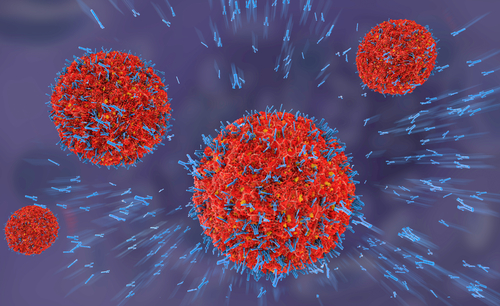Variations in Dendritic Cell Subtypes Could Predict Treatment Response in MG Patients, Study Suggests
Written by |

Changes in the ratio of dendritic cells (DCs), a subtype of immune cells, may reflect immune system function and could help predict treatment effectiveness in patients with myasthenia gravis (MG), according to a new study.
The study, “Imbalance of two main circulating dendritic cell subsets in patients with myasthenia gravis,” was published in the journal Clinical immunology.
Circulating DCs can be divided into two main groups: myeloid (m) and plasmacytoid (p), depending on the presence of specific antigens.
These cells play a key role in anti-tumor and anti-infection responses by continually guaranteeing an adequate amount of DCs in tissues. However, when factors such as infections or autoimmunity are present, the blood level of DCs may change.
Research has shown that the number of circulating DCs in MG patients with a thymoma — a tumor in the thymus — is lower before and after treatment. However, data on circulating DCs in MG patients without thymoma is scarce, including whether their numbers or relative amount of subtypes change at different disease stages, or whether these changes may help predict treatment response.
To address these gaps, the research team from China collected blood samples from 112 MG patients (age range 5-77 years) and 39 healthy controls (18-55 years). Specifically, the scientists analyzed the amount of circulating DCs, the ratio of DC subsets, as well as their changes during treatment.
Using a technique called flow cytometry, the researchers found that the absolute numbers of circulating pDCs were significantly lower in the 42 naïve MG patients — defined as those not receiving steroid or immunosuppressant treatments, or those without steroid or immunosuppressant treatments for at least three months — than in healthy controls, which led to a pronounced lower ratio of pDCs/mDCs (0.54 in MG vs. 0.74 in controls). Matching the age of MG patients to that of controls led to an even greater difference.
In turn, the 13 MG patients in completely stable remission showed normal pDCs number and a pDCs/mDC ratio similar to that of controls.
The data further showed that more advanced age and higher quantitative MG (QMG) score — indicated by greater symptom severity — correlated with a lower the pDCs/mDCs ratio. Conversely, no differences were found when comparing males with females and when analyzing patients across the five different Myasthenia Gravis Foundation of America (MGFA) classes.
Contrary to prior studies on MG describing increased numbers of mDCs in thymus with hyperplasia (bigger size), no enrichment of pDCs was found in such hyperplastic thymus, indicating no relevant migration of these cells from the peripheral blood.
Then, the team found that patients with infection-induced MG exacerbation had a lower average pDC/mDC ratio, which was similar to that of naïve MG patients. However, treatment with either prednisone in 28 patients, or prednisone and the immunosuppressant leflunomide (marketed as Arava by Sanofi) in 18 patients, eased clinical symptoms and increased the pDCs/mDCs ratio. Of note, the combination treatment led to the highest average pDC/mDC ratio. When subdividing patients according to QMG score changes, only those with decreased scores improved their pDC/mDC ratio with steroid treatment.
Subsequently, the researchers found that one month treatment of five patients with prednisone and leflunomide increased the pDC/mDC ratio by markedly decreasing mDC density, not by increasing the density of pDCs. “Our results suggest that the steroid and immunosuppressant used for the MG patients played a role in moderating the immune system,” the team wrote.
“The ratio of circulating DC subsets might reflect the balance between the autoimmune response and immune tolerance of a patient,” the scientists added. “Ratio changes during treatment could be a promising marker to predict the efficacy of a specific drug used for MG patients.”






Leave a comment
Fill in the required fields to post. Your email address will not be published.